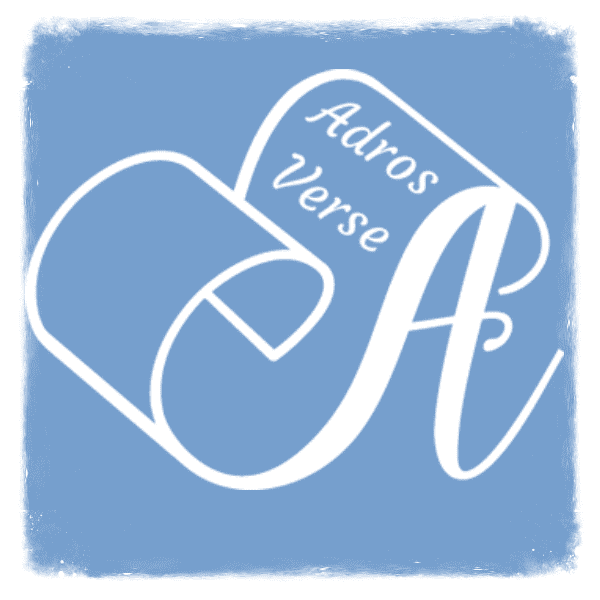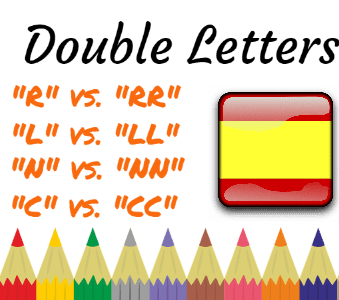In Spanish, “r” and “rr” are considered two distinctive letters. We will learn how to pronounce “r” and “rr” in different contexts. Are there any double letters other than “rr” in Spanish? The answer is yes, namely three other cases of double letters in Spanish: “cc,” “ll,” and “nn,” some are more common than others. In this article, we cover all four cases of double letters in Spanish: “c,” “l,” “n,” and “r.”
“R” vs “RR” – Normal Trill vs. Strong Trill in Spanish
The letter “r” in Spanish does not share the same features as the English “r.” To complicate things even more, there is also the double letter “rr” in Spanish. Both letters “r” and “rr” are trilled, but one is more strongly trilled than the other. Pronouncing these two letters can be challenging to some English speakers.
How to pronounce “r” and “rr” in Spanish?
Both letters “r” and “rr” are trilled by flapping the tongue against the roof of the mouth. To pronounce the letter “r,” the tongue is flapped once, whereas the “rr” sound is produced by flapping the tongue multiple times in rapid succession.
The letter “r” sounds like a strongly trilled “r” (identical to “rr”) when it is at the beginning of a word or after “l,” “n,” or “s,” e.g., “rojo” (red) sounds like /rro-ho/ and “deshonra” (dishonor) sounds like /des-on-rra/, where the stressed syllable in the pronunciation script is in bold.
To summarize:
- The double letter “rr” is always strongly trilled in Spanish.
- The letter “r” is often pronounced with normal Spanish trill.
- The letter “r” is strongly trilled only in the following three cases:
- At the beginning of a word, e.g., “rojo” (red) /rro-ho/.
- After the letter “l,” e.g., “alrededor” (around, about) /al-rre-de-dor/.
- After the letter “n,” e.g., “deshonra” (dishonor) /des-on-rra/.
- After the letter “s,” e.g., “desregular” (deregulate) /des-rre-goo-lar/.
Examples of Words that Contain “r” and the double letter “rr” in Spanish
Here are some examples of words that contain “r” and “rr,” some are pronounced with a normal trill whereas others are strongly trilled:
| Written “r” | Written “rr” | |
| Pronounced “r” (normal trill) | “pero” (but) /pe-ro/ “caro” (expensive) /ka-ro/ “cero” (zero) /se-ro/ “árabe” (Arabic) /a-ra-be/ | – |
| Pronounced “rr” (strong trill) | “rojo” (red) /rro-ho/ “deshonra” (dishonor) /des-on-rra/ “alrededor” (around) /al-rre-de-dor/ “desregular” (deregulate) /des-rre-goo-lar/ | “perro” (dog) /pe-rro/ “carro” (car) /ka-rro/ “cerro” (hill) /se-rro/ “arriba” (above) /a-rree-ba/ |
Do any Spanish words start with “rr”?
You may ask: Are there any Spanish words that start with “rr”? The answer is no. No word in Spanish starts with the double letter “rr” since the letter “r” is already pronounced as “rr” at the beginning of the word.
Is “rr” considered a distinct letter in Spanish?
Yes, “rr” is the only double letter in Spanish that is considered a distinct letter in itself, and different from the letter “r.”
“L” vs “LL” – Normal Trill vs. Strong Trill
The letter “l” and the double letter “ll” are pronounced completely differently in Spanish.
How to pronounce “l” in Spanish?
The letter “l” in Spanish is equivalent to the English “l” but pronounced differently. It sounds softer because the tip of the tongue is placed on the gum of the front teeth. Pay attention to how Spanish speakers pronounce this letter and compare it to English.
How to pronounce “ll” in Spanish?
In most Spanish-speaking countries, the double letter is pronounced in one of two ways:
1. Like “y” in “yes,” or
2. like “j” in “judge”
Examples: “llamar” (to call) /ya-mar/, “rollo” (roll) /rro-yo/, etc.
This is equivalent to the pronunciation of the letter “y” in most cases in Spanish, e.g., “yarda” (yard) /yar-da/, “yendo” (going) /yen-do/, etc.
In addition to the above two common pronunciation, there are two regional variants of Spanish, in which the double letter “ll” has a distinctive pronunciation:
- In Argentina and Uruguay, both “ll” and “y” are pronounced as “sh,” which is a prominent feature of Rioplatense Spanish, the Spanish variant spoken in the River Plate basin which includes the Buenos Aires area, e.g., “llamar” (to call) /sha-mar/, “pollo” (chicken) /po-sho/, “yarda” (yard) /shar-da/, etc.
- In some regional variants of Spanish in the Philippines, Paraguay, North Argentina, and few other regions, “ll” is pronounced “ly,” e.g., “llamar” (to call) /lya-mar/, “pollo” (chicken) /po-lyo/, etc. This case is considered the rarest.
Is the double letter “ll” considered a distinct letter in Spanish?
Notice that the Real Academia Española (RAE), the institution that sets the standard for the Spanish language, decided in 2010 that “ll” should no longer be considered a distinct letter.
“C” vs “CC” – Same as in English
Another case of a double consonant that one must be aware of in Spanish is “cc,” as in words like “accidente” (accident).
How to pronounce “cc” in Spanish?
In such cases, one “c” is hard (k-sound) and the other soft (s-sound), in a similar fashion to the English pronunciation.
Is the double letter “cc” considered a distinct letter in Spanish?
Note that “cc” is not treated as a single letter, but as a double consonant.
“N” vs “NN” – Rarely Encountered
A much less common double-consonant is “nn,” usually found in words having the prefix “in-,” as in “innavegable” (unnavigable), “innumerable” (innumerable), “perenne” (perennial), and very few more words.
How to pronounce “nn” in Spanish?
The double “n” may sound slightly stressed in Spanish as in the pronunciation of “one note” vs. “one oat” in English.
Is the double letter “cc” considered a distinct letter in Spanish?
No, “nn” is not treated as a single letter.
Words with Double Letters in English but one in Spanish?
The only double letters in Spanish are: “c,” “l,” “n,” and “r.” Thus, English cognates that have double letters in English, other than “c,” “l,” “n,” and “r,” have a single letter in Spanish. For example, the Spanish word for “effective” is “efectivo” (with one “f” only).
Learn more on: the pronunciation of other alphabet letters in Spanish and compare the pronunciation of letters in Spanish to other Romance languages such as Portuguese, Italian, and French.


